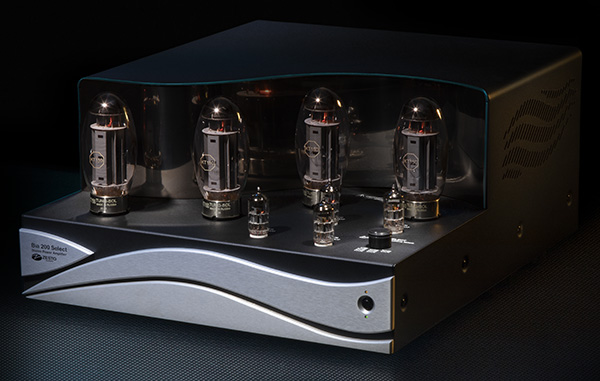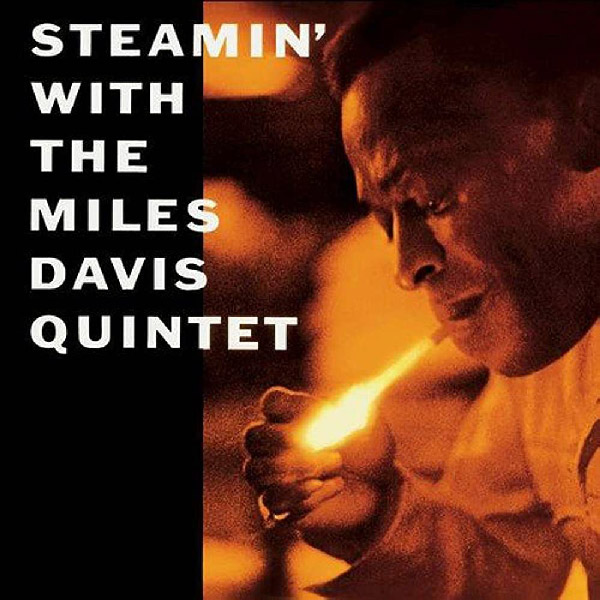| Columns Retired Columns & Blogs |
Measurements that askew could indicate something happened during shipping. Zesto should send another amp to be measured.

Big, bold, but not brutish
I began my evaluation listening closely to power tubes. The Bia 200 comes equipped with KT150s, but George supplied KT88s as well. I began with the latter. At the tube's only allowed bias setting—60Wpc—the Bia 200s with the JJ KT88s sounded laid-back, a bit slumber-toned, and easy on the ears. Lovely. Smoothness and textural sweetness were its strongest points.
The KT150s sounded entirely different, like a transparent membrane, now pulled tighter. No matter how demanding the music was, the KT150-equipped Bia 200s were happy to oblige. Moving up to the middle bias setting, and then to the highest, music swelled with more intensity and force in the low end and better articulation and more immediacy, overall. But I also heard hints of forwardness in the treble during orchestral crescendos. While running the KT150s at 60Wpc was gentler on the ears, I missed the room-filling energy the higher settings so plentifully provided.
I found myself matching bias settings to particular recordings, balancing the need for speed and power, or just on a whim as my mood changed. It was fun to adjust the amplifier's sound to the music being played. I was reminded of the Zesto Leto Ultra II preamp I reviewed in early 2021—specifically its Presence setting, which is intended to tame overbright recordings. In its unique way, Zesto is reinventing the tone control.
Record after record, the Bia 200 proved punchy, dynamic, and expansive. I found myself pulling out more classical records than usual and enjoying them more. The Bia 200's explicitness and vast soundstage allowed a deep view into recordings of Bartók, Sibelius, Beethoven, and Stravinsky. This system rendered a deep, wide soundstage. Obedient musicians followed every gesture of my air baton. Treble was not diaphanous—no cherubim-blown fairy dust—but it was precise. Percussion and strings were corporeal. On some recordings, though, the presentation possessed a certain obviousness, lacking subtlety.

The Bia 200 accentuated the sonic characteristics of my EMT TSD 15N MC cartridge: attack, definition, power. I worked hard to dial in the cartridge on my Jelco tonearm, to keep its boldness but ameliorate its forwardness. Feeding the Thorens/Jelco/EMT output into the moving coil inputs of the Shindo Allegro, then on to the Bia 200, from Beethoven: The Nine Symphonies, with the Concertgebouw Orchestra under Eugen Jochum (LP box set, Philips SC 71 AX 900), I played four in close succession. The Bia 200 illuminated the hall's deep recesses. Orchestral crescendos were often thunderous, but the Bia never lost its grip, and I heard little strain. Instruments were finely layered, at once dynamic and refined.
The lower range on the Bia 200 was massive, including upright bass played by Paul Chambers, Dave Holland, Jimmy Garrison, and Niels-Henning Ørsted Pedersen, four of my favorite old-school jazz bassists. The Bia 200's generosity in the nether zones gave upright bass a buttery feel but also serious weight, agility, and tension.
Halfway through my listening, I swapped turntables, replacing the EMT/Jelco/Thorens trio with the Acoustic Signature Maximus NEO turntable/Acoustic Signature TA-1000 NEO tonearm, which is in for review at Analog Planet, and the Luxman LMC-5 moving coil cartridge. It became clear that the forwardness and (perhaps excessive) explicitness I'd been hearing was attributable to the analog front end—especially to the EMT cartridge. The Bia 200 simply exposed the character of the Thorens trio.
With this new vinyl front-end, I heard rounder treble, smoother, more laid-back tone, but less drive and rhythmic punch than I'd been hearing. The Bia 200's transparency was exposing every flaw, leaving nothing to the imagination. With the AS/Luxman setup, the Bia 200's treble was diaphanous. It did sound like fairy dust settling gently on dulcet tones. The Bia 200, like the Leto Ultra II pre amplifier, seemed to relish the dance with upper-mid-to-treble detail, sparkle, and refinement, giving music a brisk, see-through quality like dazzling sunlight through a window on a cold winter morning.

With the Sugden LA-4 line preamplifier
Switching out my all-tube Japanese Shindo Allegro preamplifier for the solid state British Sugden LA-4 resulted in sound that was less resonant and involving. "Trane's Blues," from my 1961 mono copy of the Miles Davis Quintet's Steamin' With the Miles Davis Quintet (Prestige PRLP 7200), had less weight than it had with the Shindo, but I could hear specific tones, such as "Philly" Joe Jones's ride cymbal, more clearly. Red Garland's piano sparkled alongside Paul Chambers's chugging, four-to-the-bar bass groove and that crystalline, swinging ride. John Coltrane's deep tenor was more squawk than shout. "Sad Jane" and "Pedro's Dowry," from 1983's Zappa Vol.1, performed by the London Symphony Orchestra conducted by Kent Nagano (Barking Pumpkin Records FW 38820), played with more precision but less impact.
This was not a good match. Perhaps a different solid state preamplifier would have been a better match for the Bia 200, but I suspect that this is one tubed amplifier that benefits from being paired with a tubed preamp.
Conclusion
I've owned a Shindo Haut Brion, a 6L6-powered stereo amplifier that is specified as putting out 20Wpc, for almost as long as I've been writing hi-fi reviews. Art Dudley, Stereophile's late, great, much-missed former deputy editor, also owned one, and they sounded different from each other. As an experiment, we traded Haut Brions in order to experience the other amplifier's point of view. He preferred the darker tone of mine; I preferred the superior resolution of his. He kept mine. I kept his. I still have his.
The Haut Brion—both versions—is a wonderful, expressive amplifier. But it has nowhere near the sparkle, precision, resolution, or extension of the Bia 200. It also lacks the Bia 200's tight, well-controlled, tuneful low end. It compensates by seeming more immediate, organic, and natural than the Bia 200. Both exist to serve the music, but they do it in different ways. The Bia 200 is transparent, powerful, resolving, fun. Maybe it's the top end that seems to go out for miles, or the sonorous bass, or how it steps out of the way of recordings and lets them shine on their own terms.
Different people expect to hear different things from their hi-fi—different versions of transparency, as Herb Reichert would say—even as they seek musical truth. We're all wired for the particular sounds that make our particular hearts sing. The Bia 200 is wired in a way that, for the right person, can make that happen.

Measurements that askew could indicate something happened during shipping. Zesto should send another amp to be measured.

I dont see terrible measurement, listen this amp a lot of times, good sound and design , good job Ken

I heard some bigger Zesto amps at the Toronto audio show and found them wonderful - some of the best tube amps I've ever heard. I had to sit down and stay a while. In a show filled with bad sound, Zesto made great music.

"I dont see terrible measurement"
If you can't hear + - 8db!!! (or even half that) of frequency variations from flat, your either deaf or not an audiophile.
Cheers George

..measure significantly different, something is obviously broken. It could be tube wear, loose logistics, poor quality control; some people might hear it, some others might not; it doesn't matter. This is not what the manufacturer intended and must be fixed asap. That's what measurements is all about - hardware failure alert, not subjective experience prediction.

...as you put it, ironically becomes just that when people seize on an artifact without correlation in the actual sound of the device.
When data biases us we've lost perspective. Then we have *subjective prediction of experience* without known correlation and even without the suggestion of what that sound would be. That's subjective.
Yes, ideally the amp should be adjusted or the tubes replaced, but in any meaningful perspective this is another example of how data serves unconnected assumptions and does not serve sound, even if, in cases like this, apparently its purported benefits are virtually imperceptible.
No? The review itself describes real sound as it's altered by the aspects of the same product that actually influence it. Tube type, output circuit type, and so on, as it commonly is when evaluating these sorts of devices. Why? Because people consistently hear their objective sound and have for years. I suspect it's why makers include them.
These comments push that aside. I think we have it backwards.

An alternative to this amplifier under review would be to use neutral sounding, low noise, low distortion, load invariant amplifiers to drive the loudspeakers, in combination with a tube-audio preamplifier providing tube-audio sonic qualities while driving the resistive (non-reactive) high impedance inputs of those amplifiers.
It was mentioned that this Zesto Bia 200 Select two channel stereo power amplifier has an MSRP of $15.9k, which is a budget that could accomodate some interesting alternatives.
For example, the "Bottlehead BeePre2 300B" stereo preamplifier kit is priced at $1529. There are some worthwhile optional upgrades, including the "Bee2Quiet Stepped Attenuator / Constant Current Source" for $349, and the "BeePre2 Output Upgrade – Hybrid Shunt Regulator and Low Impedance Balanced Output" for $249. Including those upgrades brings the kit subtotal to $2127. The aforementioned $15.9k budget could afford some very high quality tubes, including new Western Electric 300B direct heated triodes, which are available at $1.5k for a matched pair, sold direct from Western Electric. Complete with other items and consumables needed to finish the kit, end cost could be under $5k, or not much more than that if you include the costs of an inexpensive temperature controlled soldering iron and some basic hand tools.
Early hifi audio had at least some of its roots in DIY and in kit assembly. Some of the contributing writers at Stereophile have sometimes embraced, or at least have not completely eschewed DIY and kit assembly efforts, though the magazine articles and website content have not included more than a very little of that.
That "Bottlehead BeePre2 300B" is a preamplifier kit, and is not a stereo power amplifier, however it leaves almost $11k in the budget for power amplifiers and XLR terminated balanced interconnect cables.
Benchmark Media's AHB2 bridgeable two channel stereo amplifier with balanced inputs is available through retailers, or is available direct for under $3.3k each. The AHB2 has received very positive review in Stereophile, exhibiting neutral, clean, load invariant output. There is enough room in the budget for two of those, at under $6.6k for the pair. Each could be bridged as mono block amplifiers, and located near the loudspeakers, using balanced interconnection cables (XLR terminated shielded twisted pair or shielded twisted starquad cable) and short loudspeaker cables.
That brings the total to approximately $5k+$6.6k= $11.6k, not including the cables. That leaves $15.9k-$11.6k= $4.5k remaining in the budget, unspent. And it includes a pair of Western Electric 300B direct heated triodes in the signal path.
There are many other alternative possibilities within this budget, and I wanted to highlight at least one of those.

Western Electric 300B direct heated triode vacuum tubes, matched pair:
https://www.westernelectric.com/300b
Bottlehead BeePre2 300B two channel stereo preamplifier kit:
https://bottlehead.com/product/beepre2-300b-preamplifier-kit/
Bee2Quiet Stepped Attenuator / Constant Current Source upgrade for the BeePre2:
https://bottlehead.com/product/beequiet2-stepped-attenuator-upgrade-for-beepre2/
Hybrid Shunt Regulator and Low Impedance Balanced Output, upgrade for the BeePre2:
https://bottlehead.com/product/beepre2-output-upgrade/
Benchmark Media AHB2 power amplifier:
https://benchmarkmedia.com/collections/all-products/products/benchmark-ahb2-power-amplifier